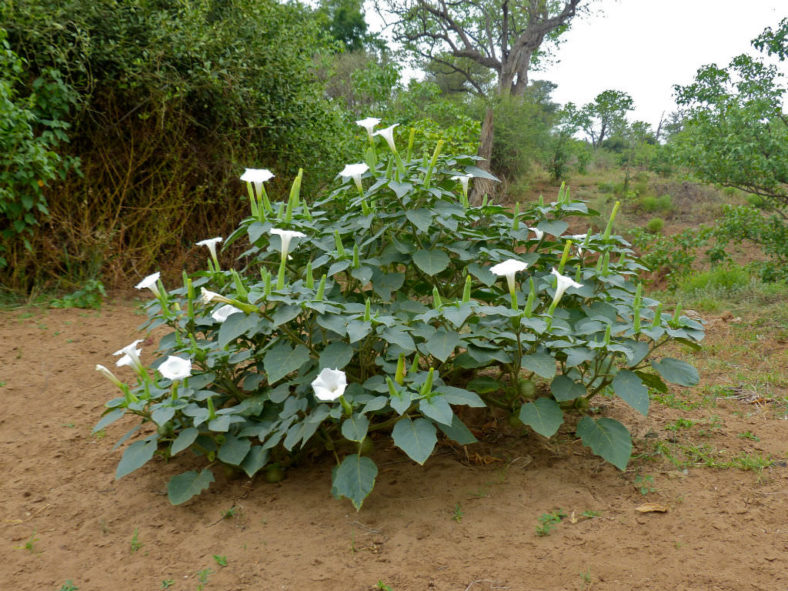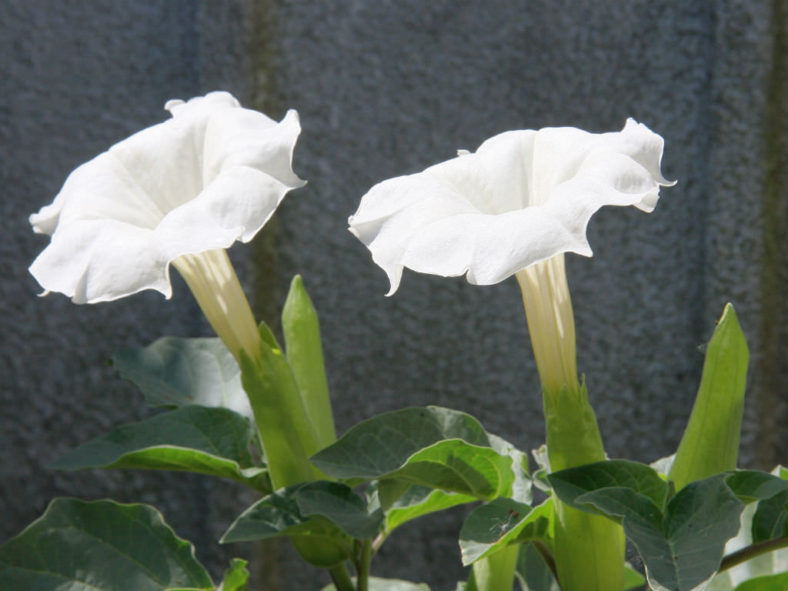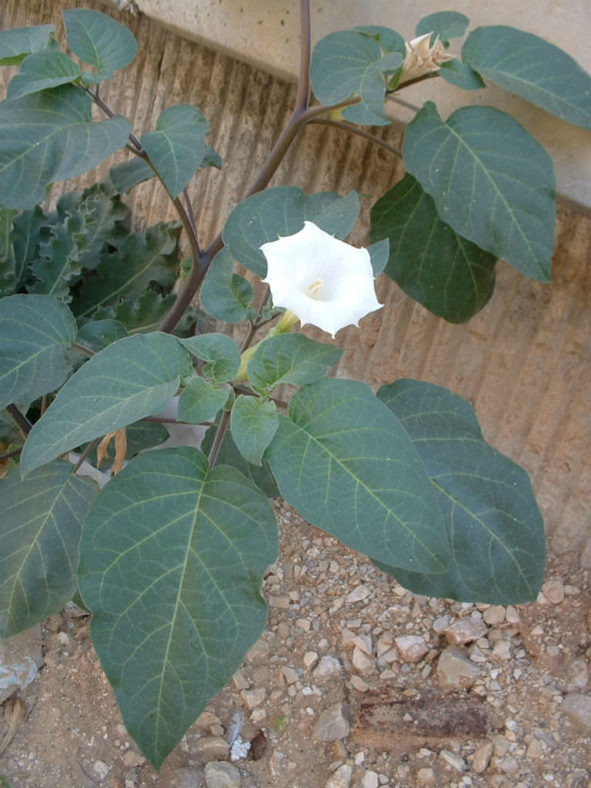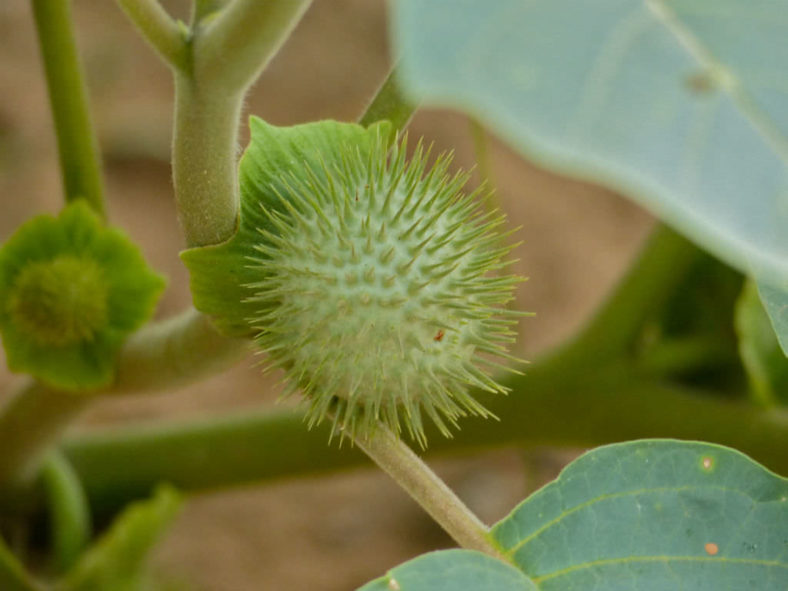Scientific Name
Datura innoxia Mill.
Common Name(s)
Downy Thorn Apple, Indian Apple, Recurved Thorn Apple, Angel's Trumpet, Sacred Datura, Tolguacha, Pricklyburr
Synonym(s)
Datura innoxia subsp. innoxia, Datura innoxia var. innoxia, Datura guayaquilensis, Datura meteloides
Scientific Classification
Family: Solanaceae
Subfamily: Solanoideae
Tribe: Datureae
Genus: Datura
Origin
Datura innoxia is native to the southwestern United States, Central America, and South America.
Flower
Color: White
Bloom Time: Early summer to late fall
Description
Datura innoxia is an annual shrubby plant that grows up to 5 feet (1.5 m) tall. It has elliptic, smooth-edged leaves with pinnate venation. The stems and leaves are covered with short and soft grayish hairs, giving the whole plant a grayish appearance.
The flowers are white, trumpet-shaped, and up to 8 inches (20 cm) long, followed by spiny, up to 2 inches (5 cm) long fruits. The plant blooms from early summer until late fall.

Hardiness
It is grown as an annual plant, so it has no USDA hardiness zone.
How to Grow and Care
You can grow Daturas inside or outside in a pot or simply spread seed with a light coat of sand outside in a sunny location. They are usually planted annually from the seed, but with care, plants can be overwintered. Most species are suited to be planted outside or in containers.
Daturas do best in full or close to full sun. The more light, the better in general.
Datura is a truly tropical species that does not take kindly to colder temperatures. Cold drafts are likely to result in leaf drop, and frost will kill it.
In containers, they should have porous, aerated potting soil with adequate drainage.
Regular watering during the growing season to keep the soil moist at all times but not soaking. During the winter, reduce watering somewhat, but never let the soil completely dry out.
Feed weekly with a weak liquid fertilizer that encourages blooming.
See more at How to Grow and Care for Daturas.
Links
- Back to genus Datura
- Plantpedia: Browse flowering plants by Scientific Name, Common Name, Genus, Family, USDA Hardiness Zone, or Origin
Photo Gallery
Click on a photo to see a larger version.




